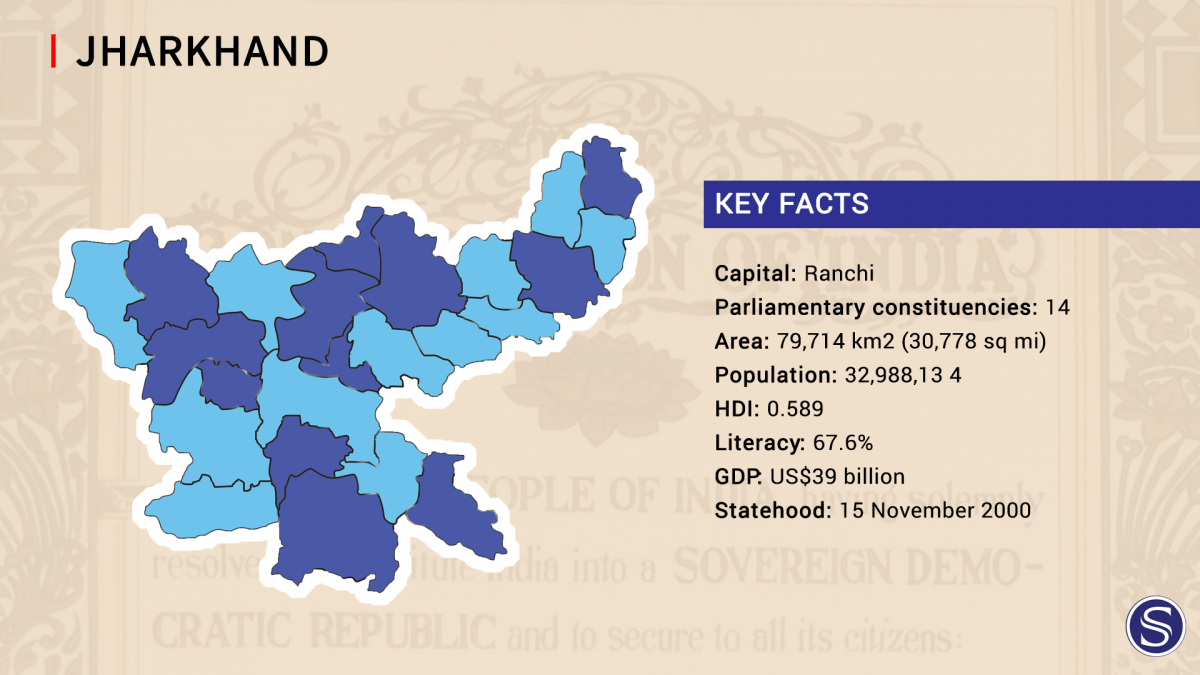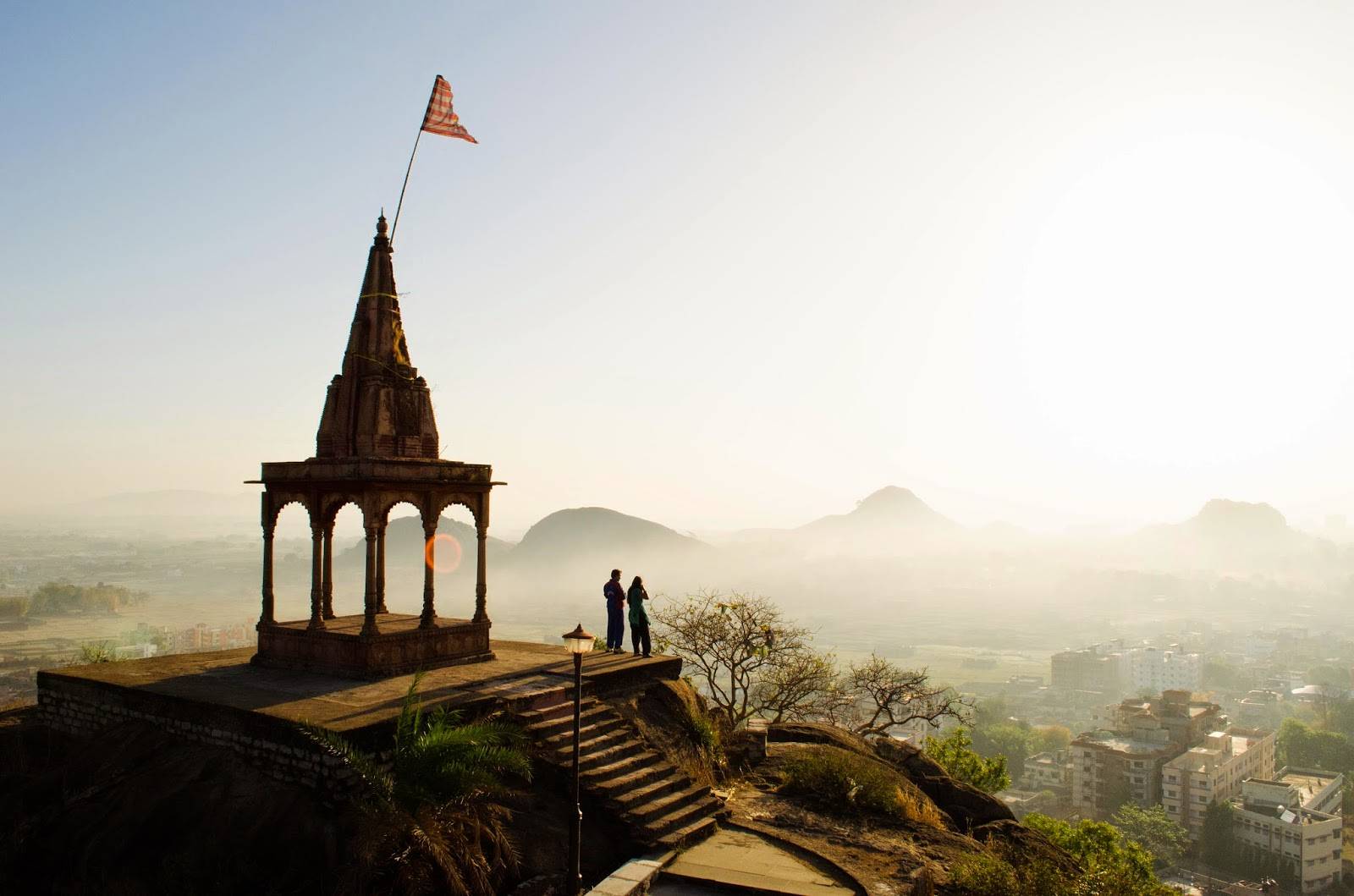Jharkhand: Mineral wealth, human poverty
April 29, 2019 | Expert Insights
Jharkhand represents an interesting mix of development and poverty. The state houses 40% of India's mineral resources but its citizens are one of the most malnourished and suffer from low per capita income. Historically, the region of Jharkhand was a part of Bihar and has been living in the shadow of Bihari politics.
Can India's mineral storehouse carve out a new political legacy of its people this year?

Background
- After Independence of India, the region became part of Bihar state. There was demand for a separate state by prominent leaders in the region after Independence but this demand was not fulfilled.
- During the 1980s and 90s, several regional political party and organisations called for several strikes in demand of Separate state.
- Bihar Reorganisation Act, 2000 passed in Parliament which gave rise new state of Jharkhand.
- The state accounts for more than 40% of the mineral resources of India, but 39.1% of its population is below the poverty line.
- 19.6% of the children under five years of age are malnourished.
- The state is primarily rural, with only 24% of the population living in cities.
- Jharkhand is among the leading state in economic growth. In 2017-18, the GSDP growth rate of the state was at 10.22%.
Profile
After Indian independence in 1947, the rulers of the states chose to accede to the Dominion of India. Changbhakar, Jashpur, Koriya, Surguja and Udaipur later became part of Madhya Pradesh state, but Gangpur and Bonai became part of Orissa state and Kharsawan and Saraikela part of Bihar state. A prominent leader like Jaipal Singh Munda and Ram Narayan Singh demanded separate but this demand was not fulfilled. After the formation of Jharkhand Mukti Morcha and All Jharkhand Students Union, leaders like Binod Bihari Mahato, Shibu Soren and Nirmal Mahto spearheaded the movement for a separate state of Jharkhand.
After the last Assembly election in the state resulted in a hung assembly, RJD's dependence on the Congress extended support on the precondition that RJD would not pose a hurdle to the passage of the Bihar reorganisation Bill. Finally, with the support from both RJD and Congress, the ruling coalition at the Centre led by the BJP which had made statehood its main poll plank in the region in successive polls earlier, cleared the Bihar Reorganisation Bill in the monsoon session of the Parliament this year, thus paving the way for the creation of a separate Jharkhand state.
1) Natural Resources: The dynamics of resources and the politics of development still influence the socio-economic structures in Jharkhand, which was carved out of the relatively underdeveloped southern part of Bihar. According to the 1991 census, the state has a population of over 20 million out of which 28% is tribal while 12% of the people belong to scheduled castes. Jharkhand has 24 districts, 260 blocks and 32,620 villages out of which only 45% have access to electricity while only 8,484 are connected by roads. Jharkhand is the leading producer of mineral wealth in the country after Chhattisgarh state, endowed as it is with a vast variety of minerals like iron ore, coal, copper ore, mica, bauxite, graphite, limestone, and uranium. Jharkhand is also known for its vast forest resources.
2) Illiteracy: As per the 2011 census conducted by Government of India the official literacy rate for the state was 67.63% (male: 78.45%; female: 56.21%). Since the formation of the new state, the Jharkhand Education Project Council (JEPC) has been implementing four projects to spread elementary education: DPEP, SSA, NPEGEL, and KGBV. The state has been moving towards the goal of universal elementary education but the target of 100% enrolment and retention of children in schools has not yet been attained. Jharkhand has made primary education so accessible that 95% of children of ages 6–11 are enrolled in school, as opposed to 56% in 1993–94; this will likely improve literacy a great deal.
Assessment
Our assessment is that Jharkhand is expected to grow at an average of 10.5% in the next five years, and it will require coherent, comprehensive education reforms in addition to stronger environmental regulations. We feel that despite the break-neck speed of economic growth, a large portion of its population still remains under the poverty line with malnutrition being the leading cause of death for children under five.


